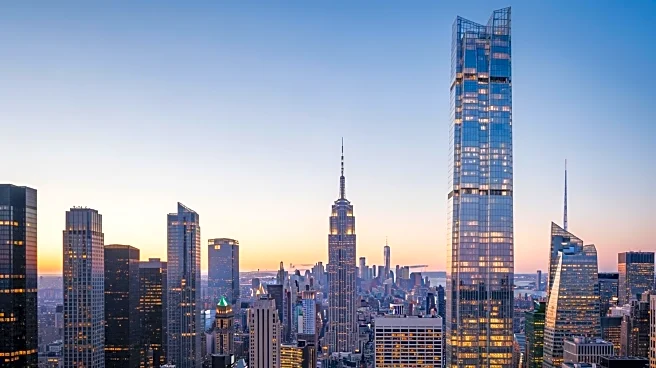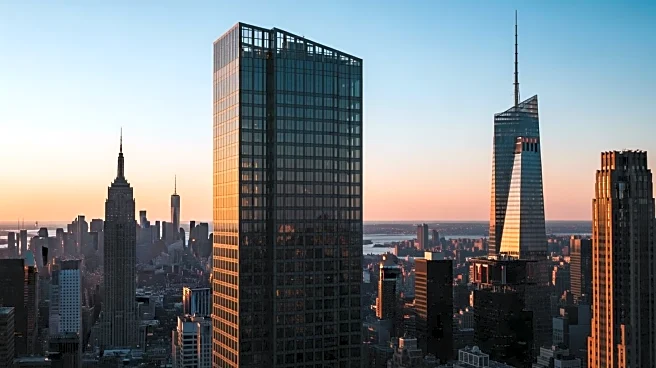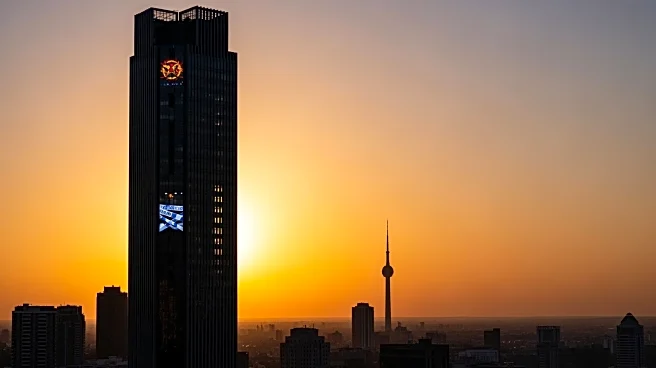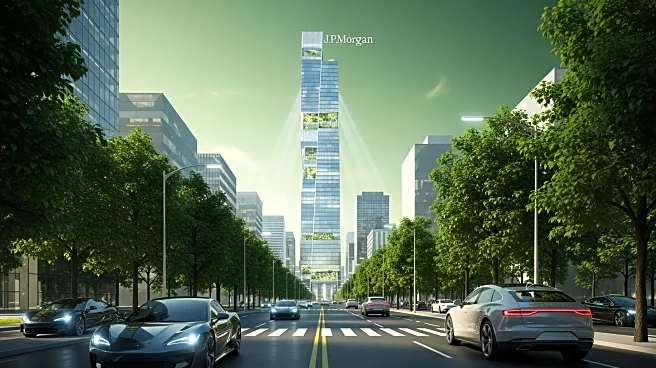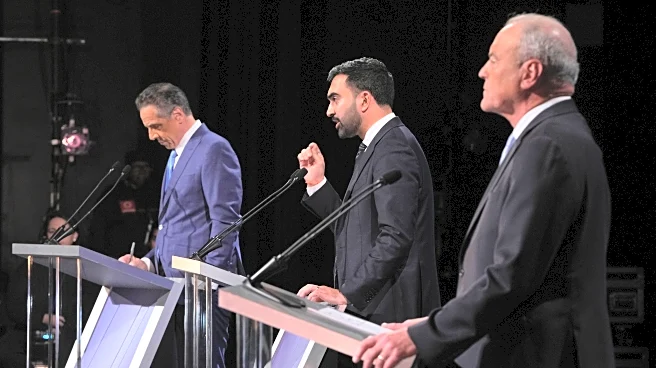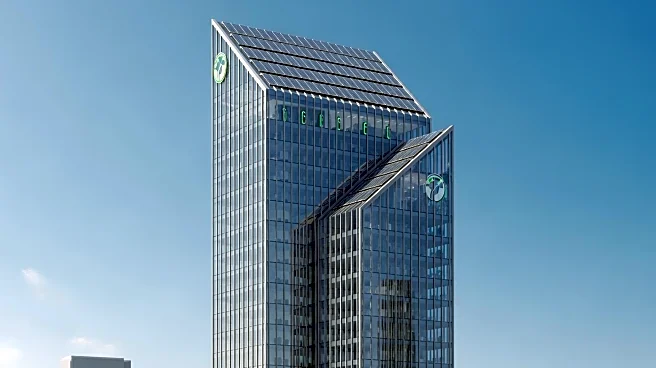What's Happening?
JPMorgan Chase has officially opened its new $3 billion headquarters at 270 Park Avenue in midtown Manhattan. The 60-story skyscraper, designed by British architect Lord Norman Foster, is a significant addition to New York City's skyline and a testament
to the bank's commitment to the city as a global financial center. The building, which took six years to complete, features state-of-the-art amenities including a fitness center, onsite medical services, and a 19-restaurant food hall. It also incorporates advanced environmental features, such as being all-electric and having indoor lighting that syncs with the human body's circadian rhythm. The headquarters will house a significant portion of JPMorgan's 24,000-person workforce in New York City.
Why It's Important?
The opening of JPMorgan's new headquarters is a major vote of confidence in New York City's status as a financial hub, especially following the economic challenges posed by the pandemic. The project underscores the bank's long-term commitment to the city and its role in the global financial system. For New York, the development is a symbol of resilience and recovery, potentially boosting the local economy and real estate market. The building's innovative design and amenities reflect a shift towards more sustainable and employee-friendly work environments, setting a new standard for corporate headquarters.
What's Next?
JPMorgan is not stopping with the completion of its new headquarters. The bank plans to invest $1 billion in renovating its temporary headquarters at 383 Madison Avenue. Additionally, it is considering future developments for a recently acquired building at 250 Park Avenue, which could be used for additional office space or converted into a hotel. These projects indicate JPMorgan's ongoing investment in New York City and its strategic expansion in the area.
Beyond the Headlines
The new headquarters also highlights a broader trend in corporate real estate towards creating more holistic and health-oriented workspaces. The involvement of wellness expert Deepak Chopra in the building's design points to an increasing focus on employee well-being as a critical component of workplace design. This shift could influence other corporations to adopt similar practices, potentially leading to a transformation in how office spaces are conceptualized and utilized.





